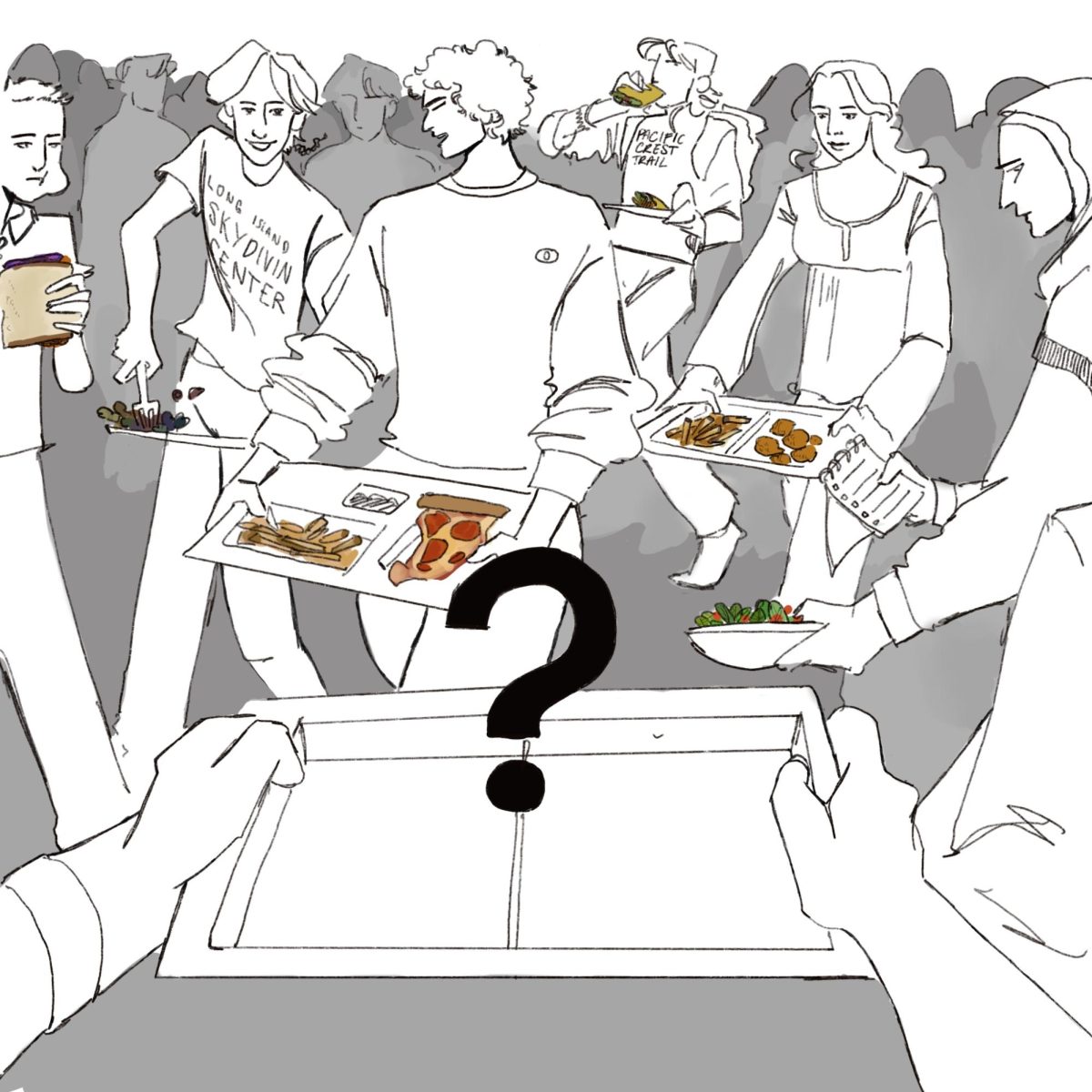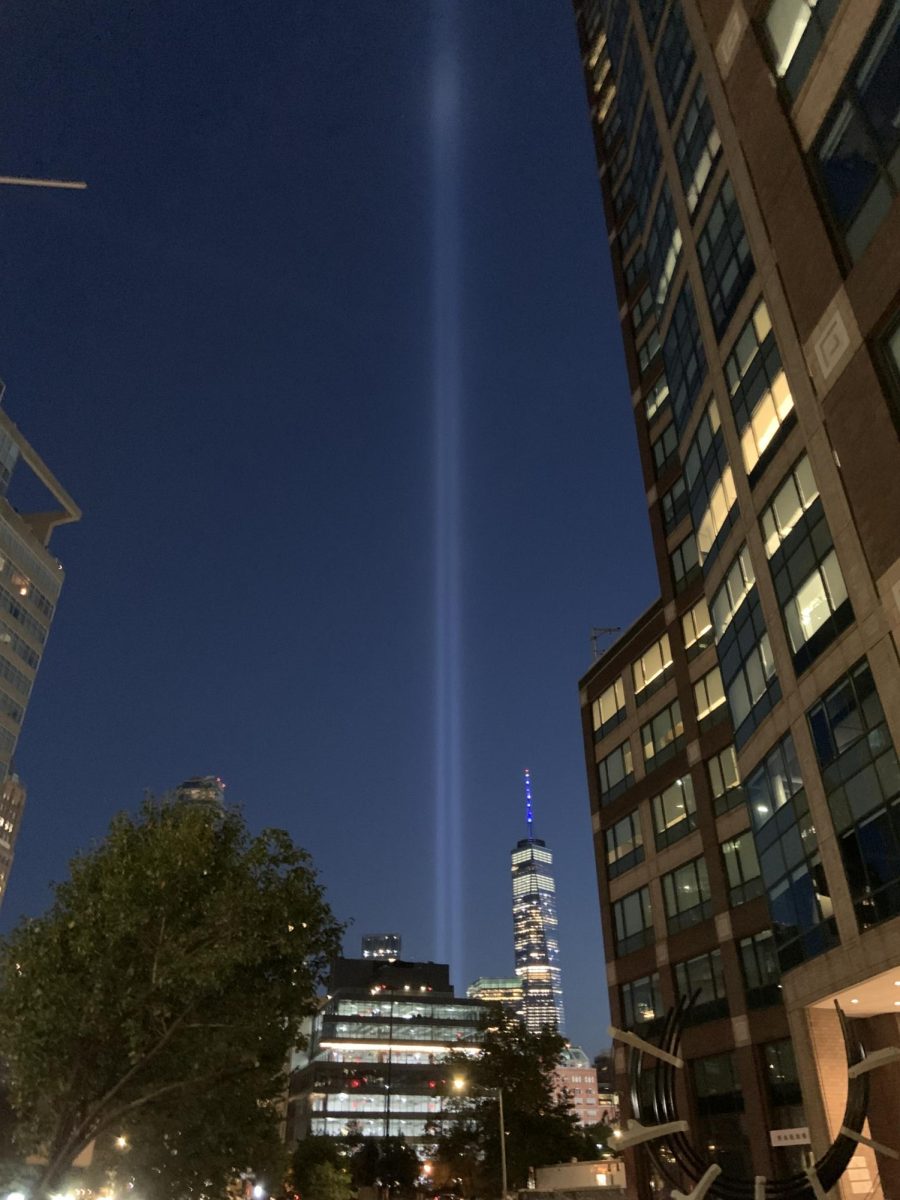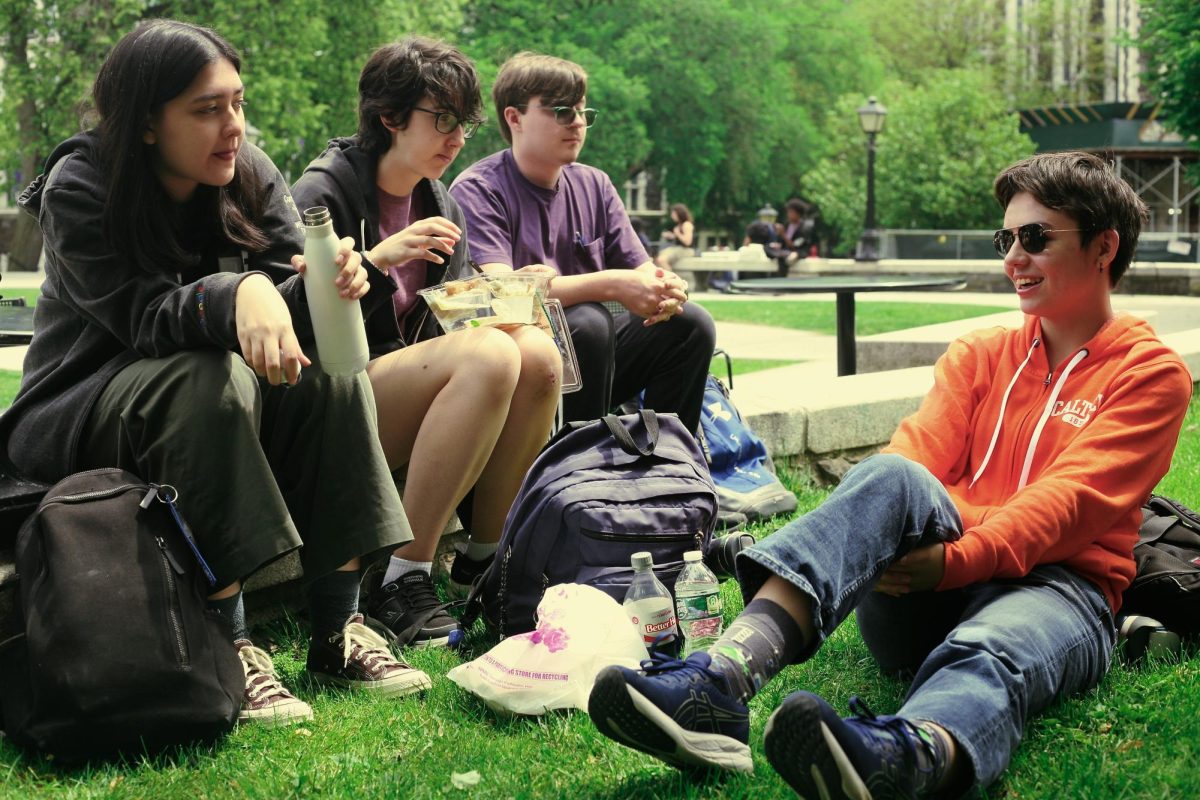Squished together on a leather sofa, in stiff blazers and dress shoes, we wait. We make nervous conversation and stare at the magazines on the coffee table. But soon, the door opens and a kind, bespectacled face emerges.
Dr. Vincent Boudreau does not carry himself with the self importance or looming stature you might expect of someone of his position. Maybe you recognize him as the guy in a suit, with an assistant or guard at his side, reminding us to pick up our trash in the quad. He’s in charge of everything on campus, yet something about him feels familiar and approachable. He greets us with an expectant smile, and our nerves relax as he leads us into his office.
Opposite large windows overlooking the campus green is a thoughtful arrangement of various artifacts: art from all over the world, framed newspaper clippings from City College student protests, and a signed sports jersey. Perched on shelves with dozens and dozens of books are photos of Dr. Boudreau with familiar figures like Barack Obama and Colin Powell. A small treadmill is situated beneath a standing desk in the center of the room. In the cozy seating area near the door, we squeeze onto another couch, and Dr. Boudreau settles into a chair across from us. He begins by congratulating us on our first two issues of The Echo, which we find neatly stacked on an end table. Dr. Boudreau had taken the time to read both our issues, cover to cover, and had sent us a thoughtful letter in response (in which he’d also agreed to an interview). As he starts to reminisce about his own high school newspaper, we scramble to set up someone’s phone to record the biggest Echo interview yet.
As an HSMSE student reading this article, you might be scratching your head wondering, who is Dr. Boudreau? Well, for starters, he is the current president of the City College of New York. But if you’re anything like us, you likely don’t know what a college president’s role entails. Above all else, as Dr. Boudreau explained it, his “main job is to set a vision for the campus. To say, this is what we stand for, this is what we’re going to emphasize, and here’s where we’re going to direct resources.” Although his job is assisted by a core group of reliable staff, Dr. Boudreau is still on call all the time. Early in his time as interim, he got his first taste of presidential duty: receiving a text from a student about a bug on the water fountain. At first he thought, “Well, that’s not really my problem,” but then he did a double take: “wait a second — that is my problem. Like there’s a bug on a water fountain! What am I going to do about this bug on the water fountain?” From bugs on water fountains to city-wide marketing, Boudreau really does hold the final say on everything.
Still a teacher and history buff at heart, Dr. Boudreau was for a time “Cornell University’s expert on Philippine protest” before teaching political science at CCNY for many years. If he wasn’t so busy leading CCNY, he’d likely still be on the ground in the Philippines or Indonesia pursuing his research on political revolutions. Growing up in North Syracuse, New York, he says that nobody “was interested in anything outside of the neighborhood.” The bus ride down to Cornell University was the most he’d travel till graduate school. But despite his early isolation, Dr. Boudreau was someone who always had a powerful drive to “see the world.” His eyes glittered with excitement as he told us about the first time he started reading about social movements: “It felt like a science fiction show where they’re working with radiation, they’ve got to put gloves on and they’re behind plexiglass. That’s how the political economy felt to me.”
Dr. Boudreau’s contagious passion for his research carries into his love for City College. In hopes of diving more into CCNY’s long history of student protests, we asked him for his thoughts. He put it simply: “We’re an activist campus and I embrace that.” Involvement in campus activism is crucial — sometimes necessary — for CCNY students. The first protest of Boudreau’s administration was one that he organized. CCNY is a largely immigrant campus, so it was “a protest against anti-immigration policies at the time. The administration came out, students came out, community groups came out. It was a beautiful thing.”As a former student activist, he knows very well the power that protests hold in producing change on a national level. Dr. Boudreau proudly described how “every year when our students graduate, a couple thousand people who are going to change the social structure of our society go out into the world.” Too many in his position continue to dismiss student voices, perhaps fearing criticism of their administration will undermine their ability to lead, but Dr. Boudreau has a different perspective. “This is our community. If you think you don’t have a responsibility to listen to student grievances, then you’re just wrong.” When Muslim students wanted a bigger prayer space, “I went down to the first protest and I said, ‘Do you want me to say something or do you want me to sit and listen?’ They said, we just want you to sit and listen. So I sat and listened.”
For nearly every question we asked, Dr. Boudreau had a story to share and a place on campus to connect it to: from Einstein’s famous lecture on the unified theory of relativity in our very own Baskerville Hall to Mark Twain’s speech in the Great Hall. So it comes as no surprise that effective storytelling is one of his missions as President: “When I first came onto the job, I wasn’t satisfied with how we were telling the story of CCNY. I said, we’re going to spend a lot of time learning about our history, telling our history, and making it known.” Yet, as MSE students, we walk through this beautiful campus everyday and know very little about its history and origins. CCNY is a fascinating place, but how does this rich history influence our lives on campus?
Founded in 1847, City College was the first free public institution of higher education in the United States. “When City College was founded, it was called an ‘experiment’,” Dr. Boudreau explains. Commonly referred to as the “Poor Man’s Harvard”, CCNY was a “historic gamble” to open higher education to the working class. The Great Hall, Dr. Boudreau’s favorite spot on campus, is an embodiment of this mission. The hall is adorned with stained glass windows gifted by other colleges wishing CCNY success, alongside an array of international flags donated from across the world. Perhaps most memorably, a massive mural above the stage depicts iconic figures like Shakespeare and Freud alongside men in overalls.
“The Great Hall is designed to convey this sense of grandeur. The students that come to City College haven’t experienced a place like the Great Hall and been told, ‘This is for you.’ It’s special,” Dr. Boudreau explained. And so, every June, without fail, when Dr. Boudreau steps out onto The Great Hall stage and looks out at the sea of CCNY graduates, he can’t help but tear up.
Having heard about his habit of crying at graduation, we naturally had to ask him about it. At first, he chuckled, but it soon became clear that he is devoted, on a deeply personal level, to CCNY and its students: “I’m overwhelmed by this institution. You go into graduation, and the graduates in the front, they look like the world. And in the back are their families. Many have immigrated here and their kid may have been the one that mediated between American society and home.” Dr. Boudreau discusses his profound attachment to CCNY in spite of the difficulties it can sometimes pose, choking up as he continues, “City College is a hard place to work. We’re always fighting budget deficits. We’re always fighting facilities that are broken down. But there’s something about this place that grabs you. From very early on in my years at City College, I was like, I’m not going anywhere else.”
After nearly 2 hours, we wrapped up the interview by asking one final, incredibly philosophical question: “If you could have a theme song that plays any time you enter a room, what would it be?” Dr. Boudreau, without a moment of hesitation, called out, “Alexa! Play Numb/Encore” and let his answer speak for itself. A fusion of Lincoln Park’s alt rock and Jay-Z’s rap flowed from the room’s speakers alongside a mix of laughter. Although unexpected, it’s safe to say that the theme song Dr. Boudreau chose was excellent in delivering the atmosphere he wanted — cool, confident, and timeless. Little did he know, this would become his iconic entrance theme.
At last year’s HSMSE Graduation in the Great Hall, as Dr. Boudreau walked to the podium to give his annual speech, “Numb/Encore” began blasting through the speakers (at our request). After the music faded, and he let out a chuckle, he delivered his speech as smoothly as the song that had marked his entrance.We were all impressed when he told us that he never writes speeches beforehand; he knows what he wants to say and lets the moment carry him — a testament to how effortlessly connected he feels to this campus and its students.
As we walked out of Dr. Boudreau’s office, and back onto CCNY’s campus, we came away with a newfound appreciation for sharing this beautiful, gargoyle-filled campus with CCNY students. Although HSMSE is at times comparable to CCNY’s little (and sometimes annoying) distant cousin, we embody many of the same values City College prides itself on. In the same way that CCNY students embark on and conclude their journey at CCNY in the Great Hall, every MSE student follows suit. MSE stands out as one of the most diverse high schools in New York, mirroring CCNY’s status as one of the most nationally diverse colleges. And as students on an “activist campus”, we have an equal responsibility to voice and stand up for what we believe in. Our conversation with Boudreau underscored the undeniable truth that we, too, are an integral part of CCNY’s rich history. And we, on and off campus, carry the legacy of this institution.
























